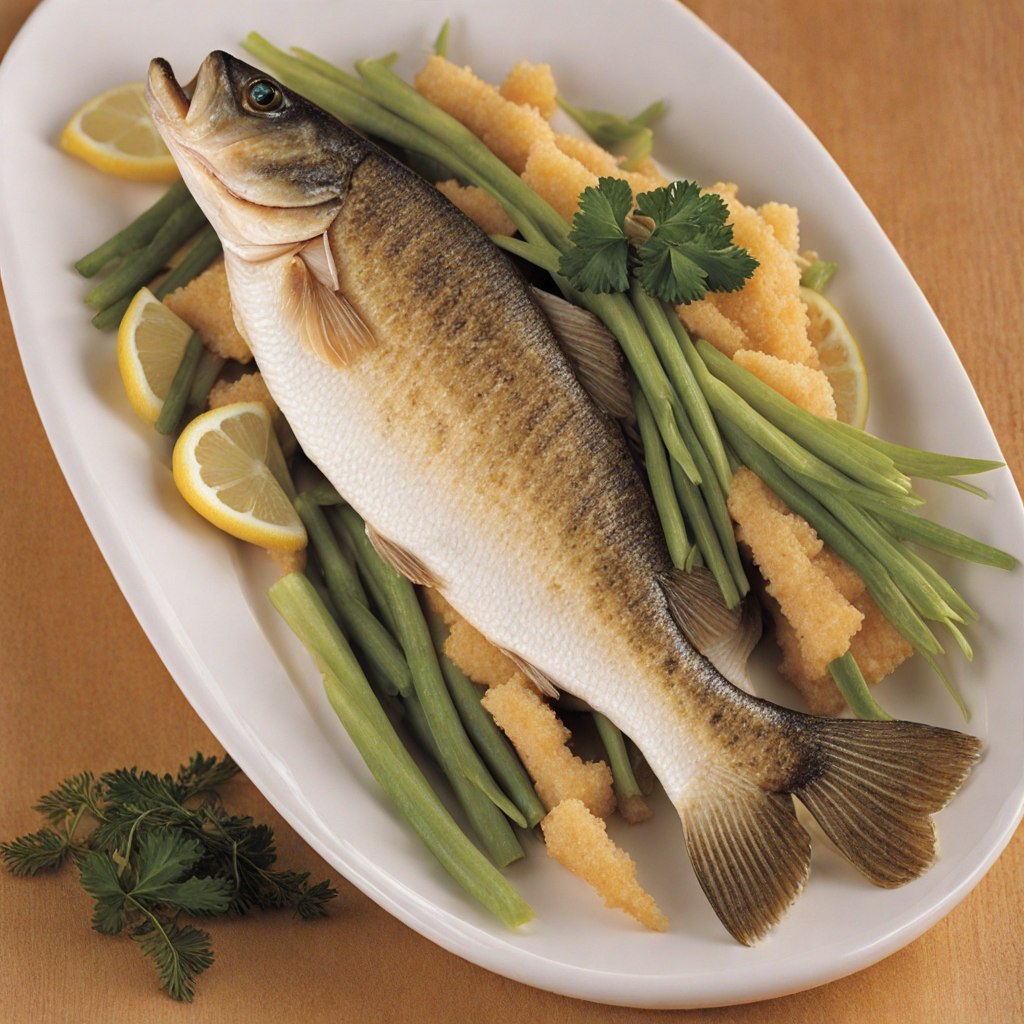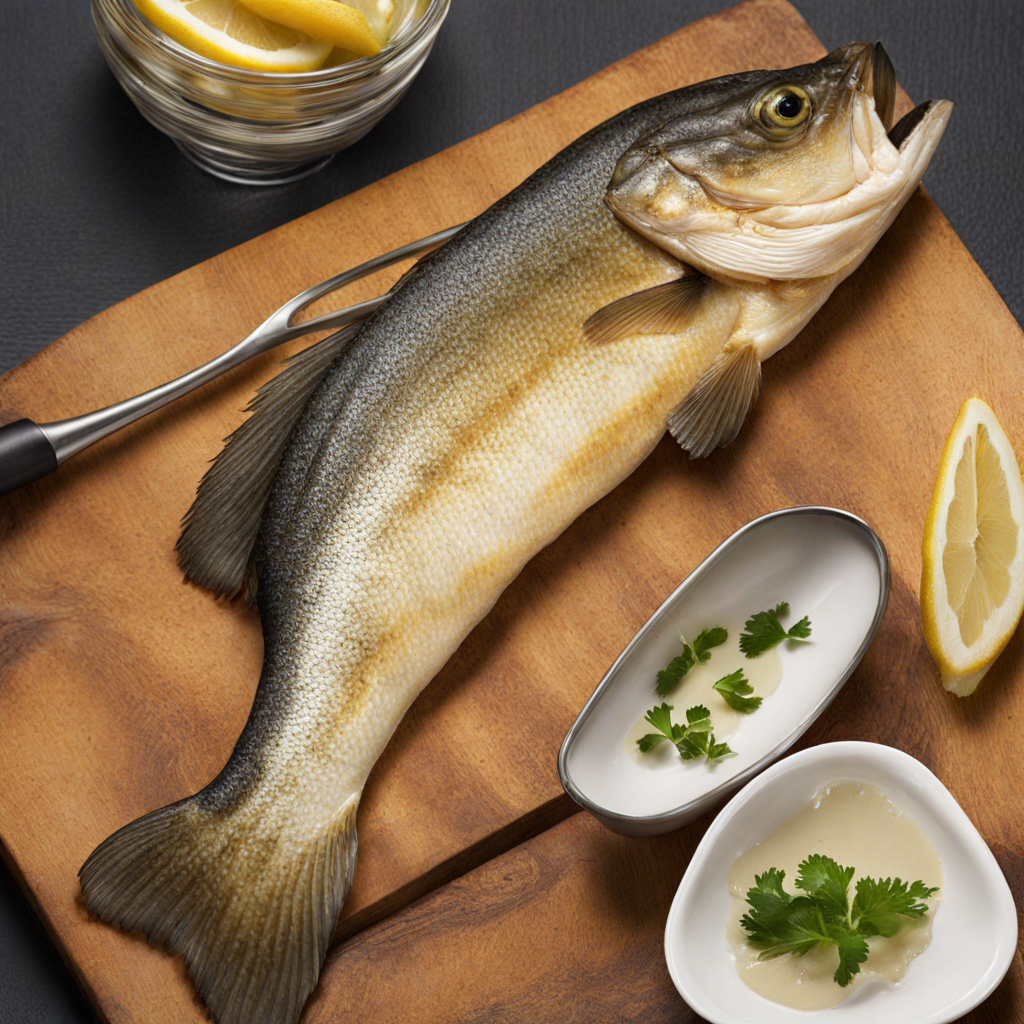Walleye
Walleye is a freshwater fish native to North America, particularly abundant in the northern United States and Canada. Known for its mild, delicate flavor and firm, flaky texture, walleye is often regarded as one of the finest eating fish in the region. The flesh is white to pale yellow and has a slightly sweet taste, making it versatile for a variety of cooking methods, from grilling and baking to frying and steaming. When cooked properly, walleye retains its moisture and offers a tender bite that melts in your mouth, making it a favorite among seafood enthusiasts and novices alike. Walleye is commonly prepared with simple seasonings to highlight its natural flavor. Traditional recipes often involve coating the fillets in a light batter and deep-frying them until golden brown, resulting in a crispy exterior that contrasts beautifully with the soft, succulent meat inside. Alternatively, walleye can be seasoned with herbs and lemon, then baked or grilled to create a dish that is both healthy and satisfying. The fish pairs wonderfully with sides such as roasted vegetables, wild rice, or a fresh salad, creating a well-rounded meal that celebrates the simplicity of fresh ingredients. In addition to its delightful taste, walleye is also celebrated for its culinary versatility. It can be featured in dishes ranging from fish tacos to chowders, and its mild flavor allows it to take on various sauces and marinades. Whether you’re enjoying it at a lakeside restaurant during a summer getaway or preparing it at home for a cozy dinner, walleye offers a delicious taste of American cuisine that invites exploration and appreciation for the region’s natural bounty.
How It Became This Dish
Walleye: A Culinary Journey through Time and Culture in the United States #### Origins Walleye (Sander vitreus) is a freshwater fish native to North America, predominantly found in the northern United States and Canada. This species belongs to the perch family and is characterized by its elongated body, sharp teeth, and distinctive golden hues. The name "walleye" derives from its unique, large, and reflective eyes, which are adapted to low-light conditions, allowing it to hunt effectively in murky waters. Historically, walleye were abundant in the Great Lakes and surrounding river systems, where Indigenous peoples relied on them as a vital food source. Tribes such as the Ojibwe and Sioux recognized the fish's importance and developed methods for catching and preserving it. The fish featured prominently in their diets, providing essential nutrients and protein. The technique of drying walleye, for example, allowed Indigenous communities to store the fish for long periods, making it a staple during harsh winters. #### Cultural Significance The significance of walleye transcends mere sustenance; it embodies cultural identity and heritage. For Indigenous peoples, walleye is not just a fish but a symbol of survival and adaptability. The stories and traditions surrounding walleye are woven into the fabric of their communities. Fishing for walleye was often a communal activity, fostering relationships and teaching younger generations about the land and water. As European settlers arrived in North America, they quickly adopted local fishing practices and began to appreciate the walleye's culinary qualities. The fish became integral to regional cuisine, particularly in the northern states. It was during this time that walleye began to take on a dual cultural identity—one rooted in Indigenous traditions and another informed by European culinary practices. #### Development Over Time The popularity of walleye surged in the late 19th and early 20th centuries, coinciding with the expansion of railroads and transportation networks. These developments facilitated the movement of fish from rural areas to urban centers, where demand for fresh seafood was rising. Markets began to sell walleye, and restaurants featured it on their menus, introducing it to a broader audience. By the mid-20th century, walleye was firmly established as a sought-after species, particularly in states like Minnesota, Wisconsin, and Michigan. The Minnesota Walleye Fishing Opener became a revered annual event, drawing thousands of anglers eager to partake in the tradition. This event symbolizes not only the excitement of fishing but also the communal spirit that surrounds walleye fishing in the region. In the culinary world, walleye is celebrated for its delicate flavor and flaky texture. Chefs and home cooks alike have embraced this fish, creating a myriad of recipes that showcase its versatility. Baked, grilled, or fried, walleye can be prepared in various ways, often accompanied by regional staples like wild rice, potatoes, or seasonal vegetables. Walleye tacos, for instance, have emerged as a popular dish, blending traditional flavors with modern culinary techniques. #### Conservation and Sustainability As walleye fishing gained popularity, concerns over sustainability and overfishing began to surface. By the late 20th century, certain populations showed signs of decline, prompting regulatory measures to protect the species. State agencies implemented fishing limits, size restrictions, and seasonal closures to allow populations to recover. These efforts reflected a growing awareness of the need to balance culinary enjoyment with ecological responsibility. Today, many walleye fisheries are managed sustainably, ensuring that future generations can enjoy this beloved fish. Conservation initiatives often involve community engagement, with local anglers and environmental organizations collaborating to monitor and protect walleye habitats. The emphasis on responsible fishing practices has not only contributed to the health of walleye stocks but has also reinforced the cultural significance of the fish as a shared resource. #### Modern Culinary Trends In contemporary America, walleye continues to thrive in the culinary scene, celebrated for its flavor and versatility. Chefs across the country have embraced walleye, incorporating it into various cuisines and styles. Fine dining establishments serve walleye prepared with gourmet flair, while casual eateries showcase it in traditional preparations. Moreover, the rise of the farm-to-table movement has brought renewed attention to locally sourced ingredients, including walleye. Many chefs prioritize using sustainable, locally caught fish, promoting the idea of eating seasonally and supporting local economies. This trend has further cemented walleye's status as not just a regional delicacy but a key player in the national culinary landscape. #### The Walleye's Place in American Culture Walleye fishing is more than just a pastime; it is a rite of passage in many Northern states. Families pass down fishing traditions, and competitive fishing tournaments draw participants from far and wide. The fish has become a symbol of community, with local festivals celebrating walleye and its cultural significance. Events like walleye fishing derbies and cook-offs foster camaraderie and pride in regional heritage. Furthermore, the walleye has made its mark in popular culture, appearing in literature, art, and even local lore. It is often depicted as a quintessential symbol of the Great Lakes region, embodying the spirit of exploration and connection to nature. The walleye's journey from Indigenous sustenance to a cherished culinary staple illustrates the evolving relationship between people and the land. #### Conclusion Walleye is more than just a fish; it is a cultural touchstone that reflects the rich tapestry of American history and identity. From its origins as a vital food source for Indigenous peoples to its status as a culinary favorite today, walleye embodies resilience, adaptation, and community. As we navigate the challenges of sustainability and conservation, the story of walleye continues to unfold, reminding us of the importance of preserving both our natural resources and the traditions that shape our culinary heritage. In every bite of walleye, we taste not just the fish but the stories of generations who have thrived alongside it, forging connections between the past and present.
You may like
Discover local flavors from United States







